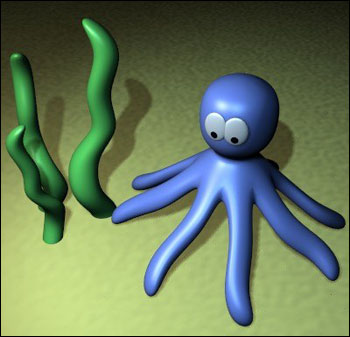Step 1 - First, on the top view ("7") add a circle (space bar > add > mesh > circle) . Choose 8 vertices.

Step 2 - On the front view ("1"), with all the points selected, press the "E" key, and click on Extrude. Then move your cursor up to move the new points as shown on the image #1. This part is going to be the "body" of the octopus (although at the moment it doesn't look like it). Press the "E" key a second time and move the points as shown on the image #2. Now, resize ("S") the last part as in image #3.

















